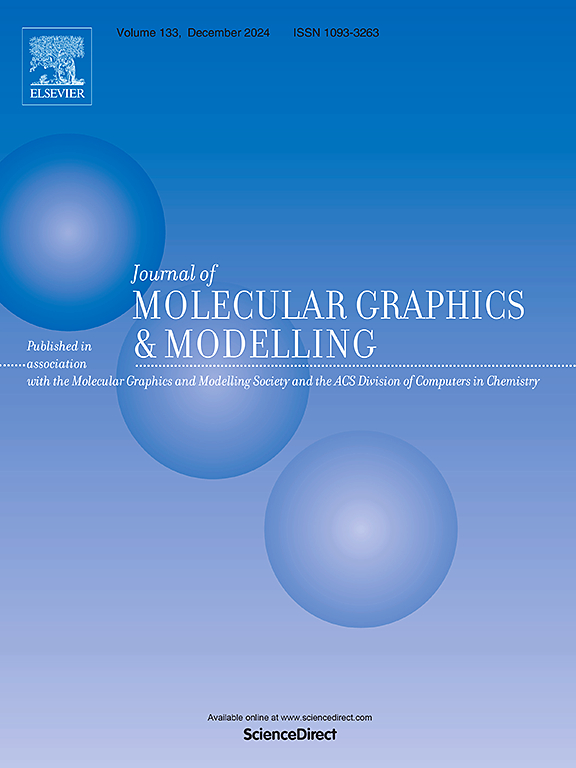Hydrogen storage in graphitic carbon nitride coordinated with boron clusters: A DFT study
IF 3
4区 生物学
Q2 BIOCHEMICAL RESEARCH METHODS
引用次数: 0
Abstract
The search for novel materials capable of adsorbing molecular hydrogen is of great interest due to the urgent need to replace polluting fossil fuels with clean energy sources. This study evaluates the adsorption of hydrogen molecules using computational methods, specifically density functional theory (M06-2X) combined with the def2-TZVP basis set, in complexes formed with graphitic carbon nitride, gC3N4, and boron clusters (Bn, n = 1–6). The average adsorption energy values for the B–H2 interactions range from −0.11 to −0.08 eV. To assess the spontaneity of these adsorption processes, Gibbs free energies were calculated for the temperatures 50–400 K. The results indicate that gC3N4Bn complexes can adsorb from 2 to 7 hydrogen molecules. Calculations confirm that adsorption remains spontaneous across the temperature range studied, which makes the gC3N4Bn complexes promising for hydrogen storage applications.

硼团簇配位的石墨氮化碳储氢:DFT研究
由于迫切需要用清洁能源取代污染的化石燃料,寻找能够吸附分子氢的新型材料具有很大的兴趣。本研究使用计算方法,特别是密度泛函理论(M06-2X)结合def2-TZVP基集,评估氢分子在石墨氮化碳、gC3N4和硼团簇(Bn, n = 1-6)形成的配合物中的吸附。B-H2相互作用的平均吸附能在−0.11 ~−0.08 eV之间。为了评估这些吸附过程的自发性,计算了50 - 400k温度下的吉布斯自由能。结果表明,gc3n40配合物可吸附2 ~ 7个氢分子。计算证实,在研究的温度范围内,吸附仍然是自发的,这使得gc3n40配合物具有储氢应用的前景。
本文章由计算机程序翻译,如有差异,请以英文原文为准。
求助全文
约1分钟内获得全文
求助全文
来源期刊

Journal of molecular graphics & modelling
生物-计算机:跨学科应用
CiteScore
5.50
自引率
6.90%
发文量
216
审稿时长
35 days
期刊介绍:
The Journal of Molecular Graphics and Modelling is devoted to the publication of papers on the uses of computers in theoretical investigations of molecular structure, function, interaction, and design. The scope of the journal includes all aspects of molecular modeling and computational chemistry, including, for instance, the study of molecular shape and properties, molecular simulations, protein and polymer engineering, drug design, materials design, structure-activity and structure-property relationships, database mining, and compound library design.
As a primary research journal, JMGM seeks to bring new knowledge to the attention of our readers. As such, submissions to the journal need to not only report results, but must draw conclusions and explore implications of the work presented. Authors are strongly encouraged to bear this in mind when preparing manuscripts. Routine applications of standard modelling approaches, providing only very limited new scientific insight, will not meet our criteria for publication. Reproducibility of reported calculations is an important issue. Wherever possible, we urge authors to enhance their papers with Supplementary Data, for example, in QSAR studies machine-readable versions of molecular datasets or in the development of new force-field parameters versions of the topology and force field parameter files. Routine applications of existing methods that do not lead to genuinely new insight will not be considered.
 求助内容:
求助内容: 应助结果提醒方式:
应助结果提醒方式:


